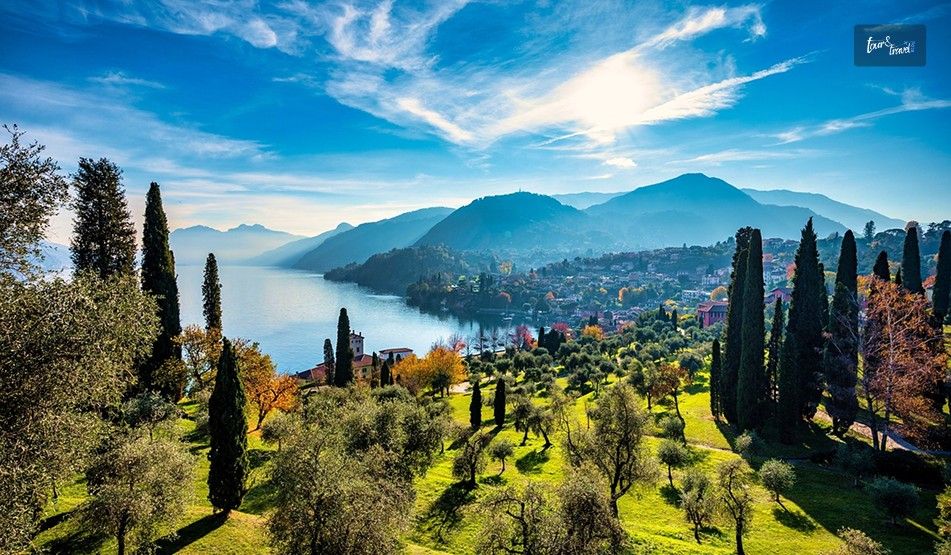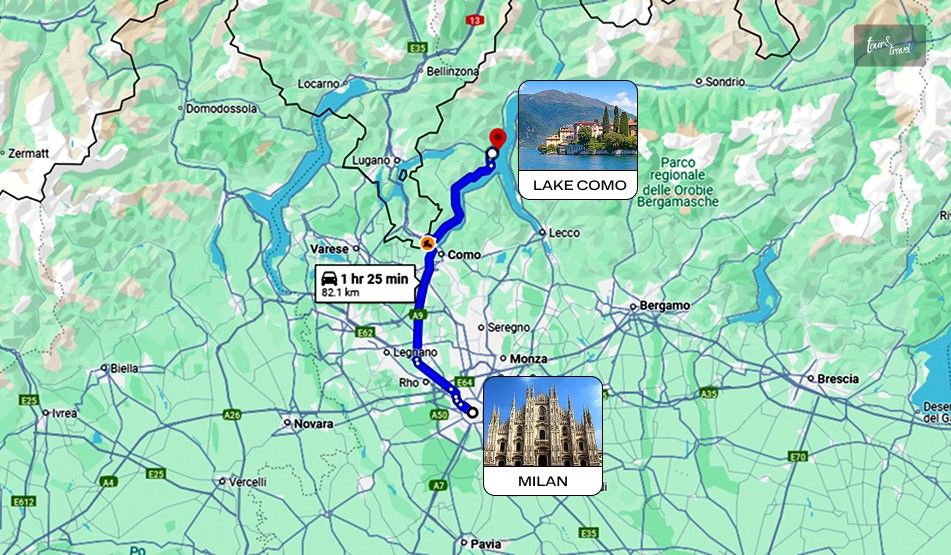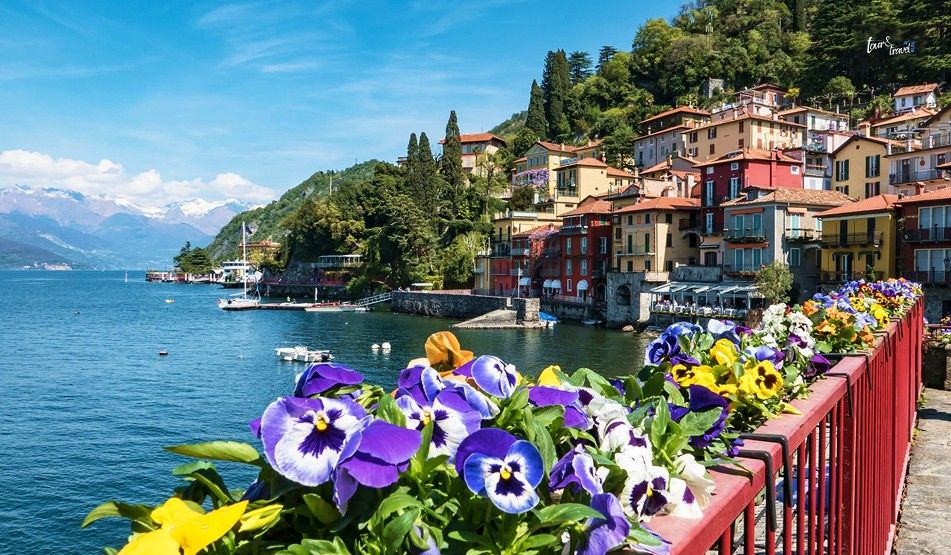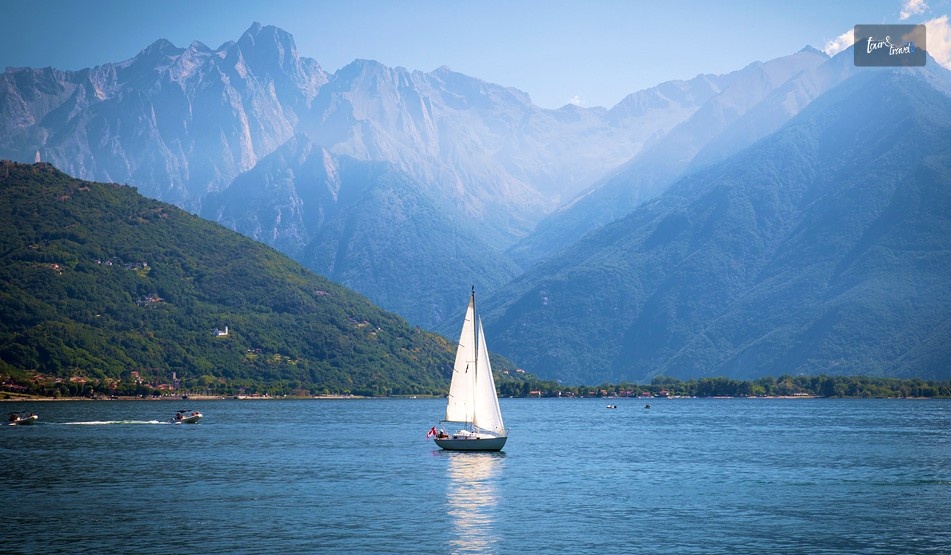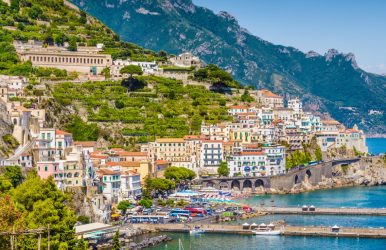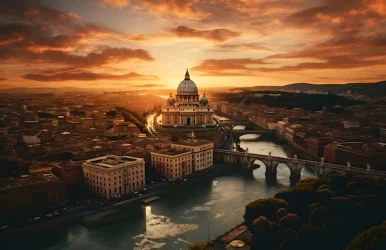What Are The Best Places To Go In Italy For An Unforgettable Experience?
BY Sibashree May 30, 2024
Are you dreaming about spending a beautiful European holiday like me? Is Italy on your bucket list? Have you already planned your trip to Italy, or are you confused by so many options? Let me share the best places to go in Italy with you! Apart from various popular places and streets, I have also shared several places of food that you must try. Italy's culture and traditions are integrated deep inside its roads, buildings, and food culture. You can also learn about the weather in Italy in October to decide when to plan your trip! Let me share with you the eight best places to go in Italy because it will be the trip of a lifetime. Top 10 Best Places To Go In Italy! Apart from the beautiful and historic places in Italy, there is so much more to know about them. You will learn about their history and how people have expressed themselves. I will share with you some of the best places in Italy, not just from a traveler's perspective. I want to share with you how to be someone who enjoys a place through its places, people, and food. 1. St. Peter's Basilica In Vatican City Best Time To Visit: November-March, on Tuesdays to Fridays Nearest Airport: Leonardo da Vinci International Airport (FCO), Rome Ciampino Airport (CIA) Duration: 2-3 hours Timings: 7:00 AM to 7:10 PM St. Peter’s Basilica is often considered one of the most magnificent cathedrals in the world. It serves as the spiritual heart of the Vatican and is the result of the creative genius of some of Italy's greatest Renaissance architects, including Bramante Raphael Michelangelo The beauty and artistry of this place truly reflect the rich history and faith that it embodies. 2. Gallerie Degli Uffizi In Florence Best Time To Visit: November- February Nearest Airport: Florence Airport (FLR) Duration: 3-4 hours Timings: 8:15 AM to 6:30 PM The Uffizi Gallery is truly a gem and a must-visit for anyone who appreciates art. Nestled in the heart of Florence, this gallery showcases some of the most incredible Italian Renaissance masterpieces, featuring the works of renowned artists like Botticelli Leonardo da Vinci Michelangelo What's even more fascinating is that the gallery is housed in a beautiful building that dates back to the 16th century, designed by the talented Giorgio Vasari. The architecture itself is stunning, and walking through its halls feels like stepping back in time. 3. Naples, Campania Best Time To Visit: April to June (Spring) and September to November (Autumn) Nearest Airport: Naples International Airport (NAP) Duration: 7 days The home of Neapolitan pizza, coastal Naples has an electric atmosphere around its urban streets. I can easily highlight Naples as one of the best places to go in Italy. Did you know that during the 18th century, they used to eat plates of pasta with bare hands in the streets? Known as mangiamaccheroni, the Neapolitans were quite enchanted with pasta's deliciousness. However, recently, it has become more popular for its pizza. The place is like a network of pizza places, the air filled with the aroma of dough, wood-fired ovens, and cheese. It would be best to stop at Gino Sorbillo, where you can get the Neapolitan pizza topped with buffalo mozzarella, which smells earthly. The restaurant is by the seaside and gives you the perfect view of Naples. The place is popular for coffee, so remember an espresso and an Americano! 4. Bologna, Emilia-Romagna Best Time To Visit: April-June, September-October Nearest Airport: Bologna Guglielmo Marconi Airport Duration: 5 days You might overlook Bologna with the likes of Naples and Rome, but if you are a true foodie, you will keep it in your itinerary. The place is the home of Prosciutto di Parma, balsamic vinegar, and Parmigiano Reggiano, which you will enjoy when you visit. The Eataly FICO, the first food theme park in the world, is a place for you to enjoy if you are a foodie by heart! The colonies across the place are medieval, surrounded by street food stalls and several small restaurants catering to students, tourists, and locals alike. The place is popular for hand-made pasta, so when you sit down at a trattoria, you must order Fat Bologna or Bologna Grossa. There are several regional dishes that you must try, such as tortellini in brodo or lasagna Verdi, along with the famous breadbasket of Italy. 5. Genoa, Liguria Best Time To Visit: Summer Nearest Airport: Genoa Cristoforo Colombo Airport (GOA) Do you remember Genoa, a seaport in northwestern Italy, from Merchant of Venice? Well, the capital of Liguria is also known as the Italian Riviera. You might miss it if you are only focused on Rome or Venice, but I would say you should not miss this place. It is one of the best places to go in Italy, especially because it is one of the best food cities in Italy. But did you know that it was the Genoese who created Pesto, the popular green sauce now found almost in every Western supermarket? But even then, a local bowl of pesto pasta with basic leaves will leave you more flavorful than ever. Another delicious dish you cannot miss is pesto lasagna, available at Cambi Caffe. If you are a dessert fan like me, you must try the rich Genoise sponge-based Sacripantina! The bakery Antico Forno Patrone is quite popular for dessert, a sponge with caramelized onions and an olive-laced square of focaccia. You will find several artisan confectionary boutiques, butcher shops, and fishmongers! 6. Rome, Lazio Best Time To Visit: March to May Nearest Airport: Fiumicino Airport (FCO), Ciampino Airport (CIA) You visit Rome and you do not go to the Pantheon—is that even a question? Apart from the Pantheon, the Colosseum is another must-visit place. So, if you are wondering about things to do in Rome, keep reading! Local pasta dishes are popular in Rome, and Lazio is established with some of the classics. Dishes such as cacio e pepe, carbonara, gricia, and amatriciana attract tourists to this place. When you visit a romantic city, you must experience the nightlife. The trattorias of Trastevere offer some of the famed pasta dishes, so you must walk across the city's cobbled lanes and experience the vibe. To taste the deliciousness of the rich carbonara dish, you can check out Ta Deo’s rigatoni alla gricia. Rome is known for its history, so you cannot miss the Jewish ghetto, rich in atmosphere and culture. If you love old buildings and feel a pull toward the city's history, you can walk along the streets and experience elegance and decay. The specialties that you must try are deep-fried artichokes and carcinoma alla guide. Another dish born from history is Trippa alla Romana, which the poorest inhabitants of Rome used to eat. You can try this to experience the real food culture! 7. Florence, Tuscany Best Time To Visit: May And September Nearest Airport: Amerigo Vespucci Airport Duration: 7 days Italian food culture is most pronounced in Tuscany, where most dishes offer the earthly flavor of peasant cooking (cucina povera)! There are various food items such as acquacotta, a soup of beans and cabbage, ribollita vegetable stew, baked beans with herbs, and the deliciousness of fagioli all’uccelletto. If you do not like beans, we have other dishes for you, which you can get in restaurants that offer international cuisine. Many of these restaurants are Michelin-starred, such as the Gucci Osteria da Massimo Bottura, which offers several-course meals with wine. Let me share one of the original food items of the place: the Florentine Steak. Cooked with herbs and olive oil, the T-bone is succulent beef from the Chianina cow. To taste the best version of this dish, you must stop in Trattoria dall’Oste Chianineria. 8. Cagliari, Sardinia Best Time To Visit: Spring (April to June) and Autumn (September to October) Nearest Airport: Cagliari Elmas Airport Duration: 3 days If you are a wine lover, you do not even have to make a choice when it comes to the most delicious white wine variety on the island, Vermentino. You will taste the salinity and acidity of this wine, and it is also the only DOCG (Controlled and Guaranteed Denomination of Origin). You will also get to try some of the highest-quality Sardinian cuisine in the II Castello old quarter of Cagliari. Furthermore, you should also try semolina fregula, pasta that is an African take on the saffron-laced seafood soups of Sardinia. I suggest you try sausage and fennel ragu or malloreddus! Both these items are compulsory on most menus, including Sardinian gnocchi. If you are a foodie, try the full-flavored cured fish roe in pasta. This is why people fall in love with Italy! The shores of Cagliari, like Sicily, are the home of delicious island food culture. The sun-swelled environment and grape-growing conditions make it ideal for fresh produce. You will experience a fusion of African and Mediterranean flavors in this place. 9. Sorrento, Bay of Naples Best Time To Visit: Late spring (April-May) and early autumn (September-October) Nearest Airport: Naples International Airport (NAP) Duration: 3 days Sorrento is situated on a cliff where you can overlook the beautiful and glittering Bay of Naples! When you visit the sun-kissed city, you must enjoy the delicious food. It is one of the best food cities in Italy, with its multilayered culture and flavoursome dishes. You will be getting the gastronomic experience of your life. One popular product, lemons, is associated with several dishes in this city. The Italian coastal town will create an escape for you to experience culture, tradition, and finger-licking food. When you start tasting food there, you will see lemons in everything, from seafood dinner to a chilled glass of limoncello or infused in a pastry. Local ingredients such as mozzarella or olive oil are available for deliciousness in the dishes, so you can visit a local farm to experience the native taste! Local dishes like gnocchi alla Sorrentina are magical meals that you can have while sitting in a lemon-fragranced garden. The food scene even includes seafood, which is quite popular. 10. Parma, Emilia-Romangna Best Time To Visit: Autumn Nearest Airport: Parma Airport Duration: 1 day Popular places like Bologna and Naples often overshadow the charming small city, Parma. With its rich culinary heritage, Parma is quite a historic place with its baptistry lineage and ancient buildings. Even the food culture of Parma is something to be excited about! So, what do you want to know about this place? The first and most important thing to understand is that it is one of the few cities known for producing versatile and delectable hard cheese. Umami parcels of meat, tortellini in brood, and Parmigiano Reggiano in a delicious and fragrant chicken broth are some of the regional specialties. You can easily sit in a tiny piazza, looking at the baroque facade of a church, and enjoy these delicacies. The Best Places To Go In Italy Listed In short, I have shared with you some of the best places to visit in Italy to experience the best culture. Furthermore, you will also learn about some of the popular restaurants, and which dishes you can try when you visit. I have selected the best food cities, along with the beautiful locations of churches and colonies, creating an otherworldly experience for you. In addition to the places, you also experience the traditions, the culture, and the ways of life. Comment on which place has attracted you the most and why.

